 |
North
High School Wall of Honor
Lester Byron Barnes, Jr.
Class of June, 1940
|
 |
 |
|
Research done by Claradell Shedd, class of 1953. PAGE IN PROGRESS |
| Lester Byron Barnes,
Jr. |
| Lester
Byron Barnes, Jr. graduated in the June, 1940 class. He
enlisted at the US Army Recruitment Center, Fort Des Moines,
IA. His service number was 17067598. He was single when
he enlisted. His next of kin was shown as Mr. and Mrs. Lester
Byron Barnes, 3400 Oxford Street, Des Moines, IA. |
|
| Lester Byron Barnes, Jr. |
 |
| Year |
x |
Rank |
x |
Status |
 |
| June,
1940 |
x |
Graduated |
x |
North Des Moines,
High School |
| May
26, 1942 |
x |
US
Army |
x |
Enlisted at the
US Army Recruitment Office, Fort Des Moines, IA |
| Several
months |
x |
Training |
x |
*Radar School, Camp
Murphy, FL |
September
14, 1943-
August 25, 1945 |
xxx |
enroute to and in
European Theater |
xx |
115th A.A. Battalion |
| In European Theater |
x |
403rd A.A. Battalion, Italy |
| In European Theater |
x |
**88th Division, Italy
Campaigns: Rome-Arno, North Apennines, Po Valley |
| October 20,
1945 |
x |
US Army/Lt.Col. |
x |
Discharged. |
| December 14,
1997 |
x |
Deceased |
x |
Huntingtown, Calvert, Maryland,
USA
Interred at Arlington National Cemetery; Section 60 Site
5521 |
|
|
*Camp Murphy,
FL
The United States Army Signal Corps established Camp Murphy, a top-secret
radar training school in 1942. Camp Murphy was located between Stuart
and Jupiter in what is now Jonathan Dickinson State Park in Martin County
in southeastern Florida.
In 1942 the federal government opened Camp Murphy. It was the home of
the Southern Signal Corps School during World War II and served as a
US Army base for instruction in radar operation in the early course
of the war. The post was named in honor of Col. William Herbert Murphy,
a pioneer in the development of radio beams and equipment for military
aircraft. Camp Murphy consisted of 11,364 acres (45.99 km2) and accommodated
854 officers and 5,752 enlisted men. The camp had close to 1,000 buildings
that included a bank, movie theater, church and bowling alley. Camp
Murphy was officially decommissioned in 1944 and used for migrant housing
during the fall and winter of 1945. Buildings not already dismantled
after the camp's deactivation were sold and carted away beginning in
1948. On 9 June 1947, the property was transferred from the US Govt.
to the State of Florida for a State Park. In 1950 Jonathan Dickinson
State Park opened to the public.
The camp included over 1,000 buildings and housed
more than 6,000 officers and soldiers. The camp was deactivated in
1944 after less than two years of operation. All but three of the
camp buildings have been torn down or removed but some of the building
foundations remain. One foundation structure still to be seen is the
vault to the Atlantic National Bank that was in the Provost building.
This is an intact two-room walk-in vault although the vault doors
have been removed. One of the vault doors apparently had to be forced
open from inside—there is a man-sized hole in the roof immediately
above the doorway with the concrete rebar bent inward.
**88th Division, Italy (US 5th Army)
88th Infantry Division shoulder sleeve insignia
Active 1917–19. Activated at Camp Dodge, IA; August 5, 1917
1942–47. Activated at Camp Gruber, OK; July 15, 1942.
Country United States of America
Allegiance United States of America
Branch United States Army
Nickname "Fighting Blue Devils"
"Clover Leaf Division"
Engagements World War II
US infantry divisions (1939–present)
Previous Next
87th Infantry Division 89th Infantry Division The
88th Infantry Division was a unit of the United States Army in World
War I and World War II. It was the first Army of the United States
division to be created "from scratch" after the implementation
of the draft in 1940.Previous divisions were regular army, reserve
or National Guard. Much of the experience in creating it was used
in the subsequent expansion of the Army of the United States.
The 88th Infantry Division was one of the first all draftee divisions
to enter the war. Formed at Camp Gruber, Oklahoma, the division arrived
at Casablanca, French Morocco, 15 December 1943, and moved to Magenta,
Algeria, on the 28th for intensive training. It arrived at Naples,
Italy, 6 February 1944, and concentrated around Piedimonte d'Alife
for combat training. An advance element went into the line before
Cassino, 27 February, and the entire unit relieved British elements
along the Garigliano River in the Minturno area, 5 March. A period
of defensive patrols and training followed.
On 11 May, the 88th drove north to take Spigno, Mount
Civita, Itri, Fondi, and Roccagorga, reached Anzio, 29 May, and pursued
the enemy into Rome, being the first American unit into the city on
4 June, after a stiff engagement on the outskirts of the city. An
element of the 88th is credited with being first to enter the Eternal
City. After continuing across the Tiber to Bassanelio the 88th retired
for rest and training, 11 June. The Division went into defensive positions
near Pomerance, 5 July, and launched an attack toward Volterra on
the 8th, taking the town the next day. Laiatico fell on the 11th,
Villamagna on the 13th, and the Arno River was crossed on the 20th
although the enemy resisted bitterly.
After a period of rest and training, the Division
opened its assault on the Gothic Line, 21 September 1944, and advanced
rapidly along the Firenzuola-Imola road, taking Mount Battaglia (Casola
Valsenio, RA) on the 28th. The enemy counterattacked savagely and
heavy fighting continued on the line toward the Po Valley. The strategic
positions of Mount Grande and Farnetto were taken, 20 and 22 October.
From 26 October 1944 to 12 January 1945, the 88th entered a period
of defensive patrolling in the Mount Grande-Mount Cerrere sector and
the Mount Fano area. From 24 January to 2 March 1945, the Division
defended the Loiano-Livergnano area and after a brief rest returned
to the front. The drive to the Po Valley began on 15 April. Monterumici
fell on the 17th after an intense barrage and the Po River was crossed,
24 April, as the 88th pursued the enemy toward the Alps. The cities
of Verona and Vicenza were captured on the 25th and 28th and the Brenta
River was crossed, 30 April. The 88th was driving through the Dolomite
Alps toward Innsbruck, Austria where it linked up with the 103rd Infantry
Division, when the hostilities ended on 2 May 1945.
The unit was in combat for 344 days and sustained
15,173 casualties (killed, wounded or missing).
|
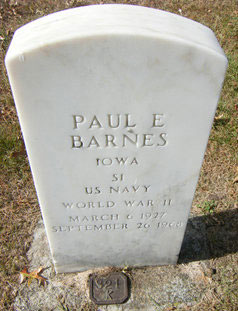 |
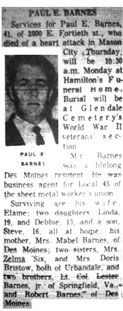 |
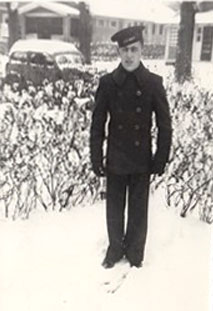 |
| get correct pictures
for Lester |
Obituary |
December, 1944;
3400 Oxford Street |
|
 |
| Find-A-Grave; Memorial # 35017178 |
|


|
Lester
Byron Barnes, Jr.
Lt. Colonel
WWII, Korea, Vietnam
US Army
)
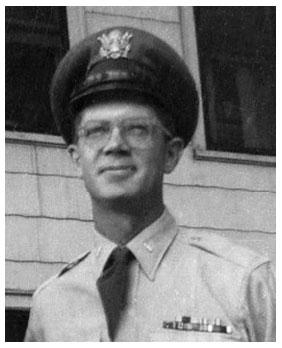

WWII Victory; Good Conduct;
American Theater;
European-African Middle Eastern Theater w/battle star (Rhineland)
In following campaigns: Normandy; Northern France; Ardennes; Rhineland;
Central Europe |
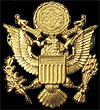
 |
|
|
|
| Died:
12/14/97. Huntingtown, Calvert, Maryland, USA |
| Music:
"Wind Beneath My Wings" |
Home
|
Back/allyears |
WWI |
WWII |
Korea |
Vietnam |
Afghanistan/Iraq |
Lyrics
|
Refs/Awards |
Contact
©2025-csheddgraphics All rights reserved.
All images and content are © copyright of their respective copyright
owners. |
|










